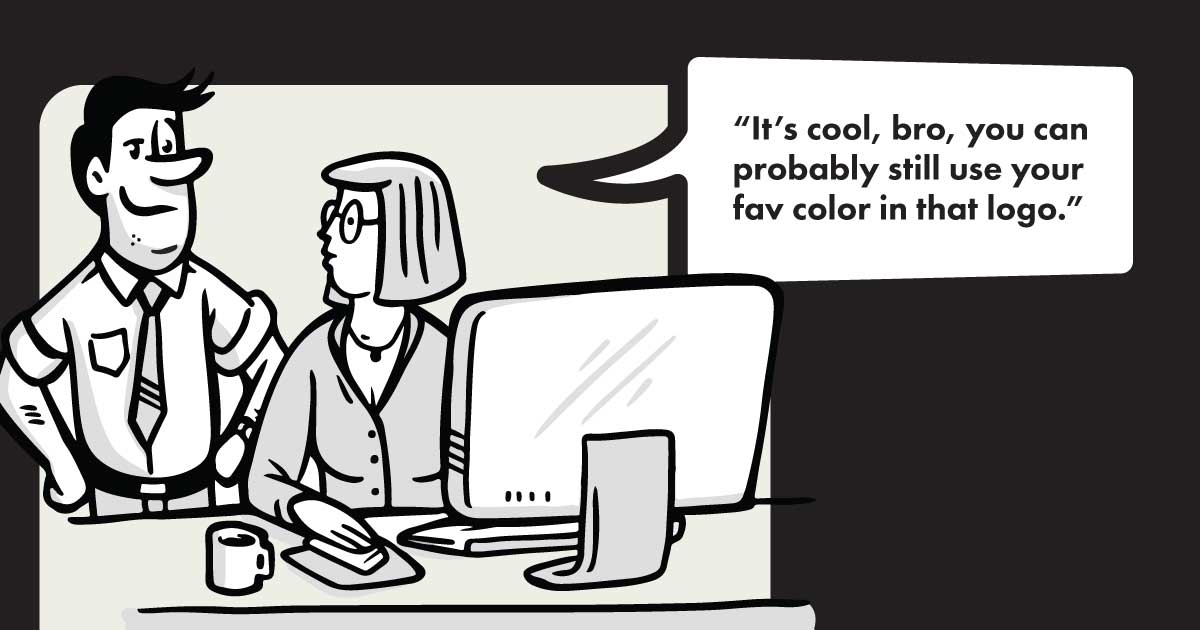3.24.22 | read time: 3 min
Design vs. Art: Objectivity & Subjectivity
Kelsey Selis
Design is not just art. To the unfamiliar, the words art and design may seem synonymous. And while they are similar as pure, visual expression, design and art are significantly different. While design and art overlap and intertwine in many ways, there is one thing that separates the two completely: purpose.
The purpose of design is that it has a job. Its entire goal is to visually solve a problem. Although art can do these things, it is not bound to them.
Designers use a multitude of elements in order to accomplish their goal of solving a problem. They implement typography, photography, layout and balance techniques, color theory, and other strategies. Many of these elements have objective power in that there is data and reason behind them.
While artists also use these elements, they aren’t necessarily creating something with an identified goal in mind. Nor are they making decisions based on data or to make their audience feel or do something specific. Designers, on the other hand, must be more objective in their decisions. This is an important point—let’s dive in a little further.
Understanding Objectivity
By definition, objectivity is “not influenced by personal feelings, interpretations, or prejudice.” Objectivity is based on facts and is completely unbiased. In reference to design, we make objective design decisions based on testing, industry prowess, research, data, and factual evidence. Objective design searches for feedback and looks toward best practices, standards, and psychological information for rationale.
Every design choice (yes, even the “pretty” ones) must point back to objectivity and be rationally explained. If a design approach cannot communicate or accomplish its intended job, it is a failure–no matter how pretty, awesome, or cool someone (or the designer themselves) might think it is.
Making objective design choices does not mean that design should be boring or matter-of-fact. In reality, each stylistic choice needs to add to the overall meaning of the work, and some of these choices may be subjective.
Recognizing Subjectivity
Subjectivity is the yin to objectivity’s yang. Being subjective means “placing excessive emphasis on one’s own moods, attitudes, opinions, etc.” Subjectivity doesn’t really take anything other than “I like/don’t like it” into account.
All designers need to use subjectivity in order to achieve the project’s objective goals with grace and originality. For example, a designer must rely on their experience and personal taste in order to ensure subjective aspects of a design operate in harmony with the overall goal and objective design choices. This is no easy task. It requires being both audacious and pragmatic at the same time.
If a design was overwhelmingly subjective, (as in the designer makes decisions based solely on their personal feelings) it would become art. And, as previously discussed, design is not art. Knowing how and when to make subjective decisions will ultimately lead to more refined work.
Good Design Employs Both Objectivity & Subjectivity

Designers make a lot of decisions which all need to serve the project’s ultimate goal. Good designers understand when to throw some of their own taste into a design, and when to hold back. A good designer, for example, knows the importance of brand consistency, but also understands how to play with brand variability. A great designer searches for opportunities to step outside a rigid brand to bring value and further appeal to the audience.
Great designers also understand that even their personal decisions need to have strategic insights to back them. For example, a serif typeface might be more prevalent in a particular industry, but a designer may prefer sans-serif. Using a sans-serif typeface might be unusual, but it may also stand out in the category.
Long Live Good Design
Understanding how subjectivity and objectivity play together takes time and experience. It also requires getting things wrong and taking risks. Gaining experience and insight on the proper mix of the two–depending on the needs and ultimate goals of the project–will lead to better, more successful work.
Our talented designers are here if you ever need help finding that “just right” balance between objectivity and subjectivity in design.

